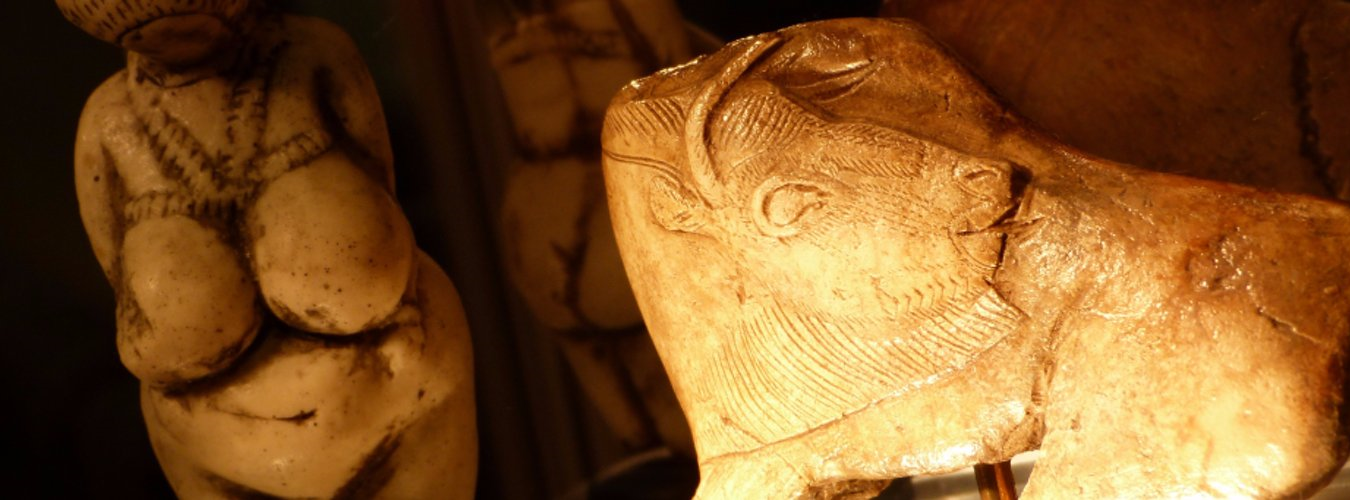Professor William Davies
Professor of Palaeoanthropology
(023) 8059 9408
S.W.G.Davies@soton.ac.uk
William Davies is a Professor of Palaeoanthropology at the University of Southampton.
I joined Archaeology as a research fellow in 2001, working on the S2AGES project (2001-2004) with Prof. Clive Gamble, and became a Lecturer in September 2006. I became Senior Lecturer/Associate Professor in 2013, and Professor in 2020. Since 1992, my research has focussed on mobility/dispersal, interaction and innovation in Palaeolithic hunter-gatherers, particularly in late Neanderthals and in early Homo sapiens. I was a founder member of the Stage 3 Project (1996-2001), which aimed to set the extinction of Neanderthals and the arrival of Homo sapiens in Europe into a broad and coherent ecological and climatic framework. Between 2004 and 2009, I was closely involved with two NERC-funded projects to obtain new, more reliable radiocarbon dates for diagnostic artefacts in eastern and western Europe (50-20 thousand years ago). I was involved in the NERC-funded RESET consortium (2008-2013), which used microscopic volcanic ash layers to provide a chronological framework for Neanderthal and early Homo sapiens sites in Europe, the Levant and North Africa. Between 2013 and 2016 I ran a 3-year, Leverhulme Trust funded, DEPICT project to explore innovations and manufacturing techniques in the c.10,000 ceramic figurines known from Eurasia and North Africa between 40,000 and 10,000 years ago, using the expertise of Dr Rebecca Farbstein. Since 2019, I have been involved with a British Academy Newton Fellowship (Dr Aitor Ruiz Redondo) exploring and analysing the presence of cave art in the Balkans and eastern Europe (PALAEOART EAST Project).
I am a Fellow of the Society of Antiquaries, and sat on the NERC National Radiocarbon Facility steering committee between 2013 and 2019. I am currently Director of Programmes for Archaeology.
I am a Fellow of the Society of Antiquaries, and sit on the NERC Radiocarbon facility steering committee.
Research interests
My research interest lie primarily in the analysis of mobility and dispersals in past hunter-gatherers, and in the development of what is often called “behavioural modernity” (the traits that archaeologists believe characterise humans today, such as language, music, symbolism, complex long-distance social networks). Was “behavioural modernity” restricted to Homo sapiens, our own species, or did other hominin species, such as Neanderthals, show evidence of some of these traits as well? Were these “modern” traits present as a coherent package from the start, or did they arise piecemeal in different places and at different times? How does the process of innovation and transmission of ideas operate in mobile societies? The intermittent representation of some of the key behavioural traits in the Palaeolithic archaeological record can be linked to mobility, dispersal and interaction patterns in hominins, set against a background of environmental and climatic change. These ideas will be explored more between 2013 and 2016, with a recently-funded Leverhulme Trust project <Palaeolithic Origins of Ceramic Technology: innovative and creative revolutions>, which aims to study in detail the manufacturing and aesthetic choices made by the Palaeolithic manufacturers of figurines (40,000-10,000 years ago) in Eurasia and North Africa. The apparent invention of ceramic figurines in different places and at different times within the late Palaeolithic will be tested, as will alternative hypotheses (e.g. transmission of ideas between spatially and temporally separated populations).
For almost 25 years I have been closely involved in the reconstruction of past environments and climates, and the relationship of those models to the late Palaeolithic record (60-8 thousand years ago). How did our hunter-gatherer ancestors respond to climatic and environmental change during the last Ice Age? We should not suppose that Palaeolithic peoples simply endured whatever climates and environments characterised their landscapes; instead, much evidence points to active responses being made by these hunter-gatherers in deciding which environments and resources to exploit. Improving the quality of our archaeological dating is crucial to enable us to relate past hunter-gatherer decisions and interactions to contemporary environmental conditions. Thus, since 2004 I have thus been closely involved in three NERC-funded projects designed to improve our chronologies for the period 60-8 thousand years ago. In the last decade, I have also been increasingly involved in evaluating creativity in Palaeolithic foraging societies, and have been involved in projects exploring the earliest ceramic technologies and the analysis of cave art in areas outside western Europe.
PhD supervision
Current and previous PhD supervision includes:
- Neanderthal raw material economy and energetics in NW Italy
- Neanderthal blade technology in NW Europe
- Neanderthal landscape ecologies
- Human exceptionalism and biases in human origins research
- Experimental reconstruction and evaluation of Aurignacian organic projectile technology
- The rock art of the Coâ valley (Portugal)
- Levallois technology in China in its broader context
Research group
Affiliated research groups
Centre for the Archaeology of Human Origins, Human Evolution, Chronology, Dispersals and Lifeways, Prehistoric Landscapes, Monuments and Materialities
Research project(s)
RESET (RESponse of humans to abrupt Environmental Transitions) – Dormant
This research consortium, involving scientists from four institutions in the UK (the Geography and Earth Science Departments of Royal Holloway University of London, the School of Archaeology in Oxford University, the National Oceanography Centre and the Department of Archaeology in University of Southampton, and the Natural History Museum), has been awarded £3.4 million to develop a novel approach to assessing how humans may have responded to rapid environmental changes in the recent past.
Promoting digital solutions to rock and cave art research
This 18 month project (2014-2015), funded by a BA/Leverhulme Small Research Grant, aims to advance rock art research through the application of state-of-the-art imaging technologies.
Palaeolithic Origins of Ceramic Technology: innovative and creative revolutions
This project has been funded by the Leverhulme Trust (RGP – 2013-073) and will run for three years from May 2013. It is the first comprehensive and comparative analysis of the more than 10,000 ceramic figurines found across Eurasia and North Africa dating to the late Palaeolithic (c.40,000-13,000 years ago).
